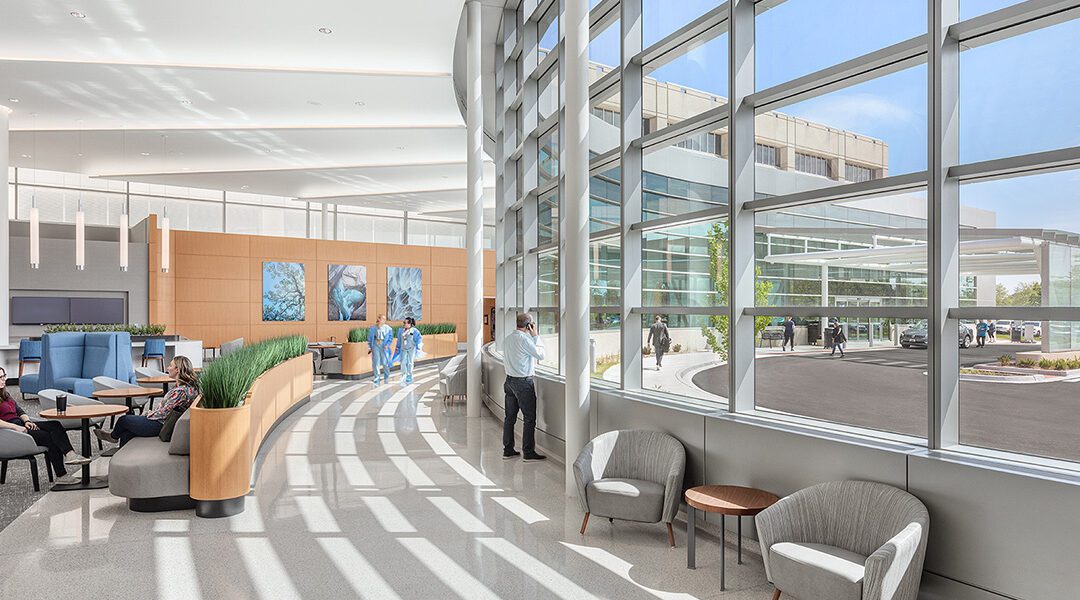G/BA engineers have developed strategies to help with common pain points for hotel and resort facility managers.
Contact us for assistance if you’re experiencing any of the following electrical or plumbing issues, and refer to our prior blog for Part 1, HVAC.
Electrical
Obsolete lighting controls
- Lighting control systems may be obsolete and unable to handle the demands of newer A/V and lighting technology.
- Lighting control systems may not be properly aligned with updated local energy conservation codes.
- During each planned renovation, lighting control replacement should be considered and budgeted accordingly.
Planning and implementing a preventative maintenance (PM) schedule (thermal scanning, equipment exercise)
- Often, the electrical system is neglected in the building maintenance budget.
- Equipment that has not been properly maintained and is more than 30 years old may not function properly. For example, circuit breakers may not trip when necessary, or switches may not open easily.
- Hotel engineering staff should budget for annual preventative maintenance checks on every piece of electrical equipment. This will minimize the chance of a catastrophic event and long power outages for the hotel.

Regular maintenance routines can help prevent electrical system issues in hotels.
Obsolete power distribution equipment
- A preventative maintenance inspection may identify equipment that should be replaced due to damage or non-performance.
- The hotel engineering staff should solicit an opinion from the preventative maintenance contractor regarding which items should be replaced immediately and which can be replaced as part of a planned, phased approach.
- If an immediate need is not identified, hotel engineering staff should budget and plan for replacement during low occupancy periods to minimize impact of power outages.If the obsolete equipment serves areas planned for renovation, the project renovation budget should include the cost of electrical equipment replacement.
- Many of the recommendations and suggested fixes are relatively low-cost measures that have quick payback, for high return on investment.
Plumbing
Long wait times for domestic hot water
- Immediate access to hot water is a standard guest expectation. In some hotel rooms, hot water is only available after the guest has let the water run for quite a while. This delay is not only environmentally wasteful but frustrating for the guest.
- The solution may be as simple as rebalancing the existing hot water system.
- In hotels with atypical riser layouts, improperly sized pipes, or large, low footprints, the solution may not be as straightforward.
- A comprehensive review of the system can help determine the solution that best addresses the problem:
- Install automatic balancing valves that keep the system in balance regardless of usage.
- Selectively re-pipe troublesome end risers or end-of-line fixtures.
- Review actual peak demand vs. system storage capacity and recovery time.
- Repair or add insulation to reduce heat loss.

Guests may become annoyed if immediate access to hot water is not available.
Domestic hot water pipe failures
- Compared with closed-loop systems, open systems such as domestic hot water experience significant changes in flow rates and are constantly subjected to different water conditions.
- Softening requirements for domestic water vary depending on use (toilet room, laundry, kitchen, dishwasher). Problems can arise from too much or too little treatment.
- So-called “corrosion erosion” from excess velocity is a common problem.
- Scale and buildup from insufficient treatment can lead to weakening of material as well.
Legionella control in domestic hot water systems, spas, and decorative fountains
- Very harmful bacteria can thrive and propagate through facilities if plumbing systems are not carefully managed. The outbreak of disease stemming from exposure to the bacteria can be very harmful or deadly to elderly people and people with compromised immune systems or other afflictions.
- ANSI/ASHRAE Standard 188-2018, Legionellosis: Risk Management for Building Water Systems, establishes minimum legionellosis risk management requirements for building water systems. Review the standard and consult an expert to develop a roadmap for compliance to minimize the likelihood of an outbreak at your facility.
- Key considerations include:
- Presence of cooling towers, the cooling tower design employed, and the tower location relative to other building systems.
- Presence of whirlpools or spas.
- Ornamental fountains, misters, or other non-potable water systems.
- Temperature at which potable water is stored in tanks and vessels and accompanying master mixing/tempering valve.
- Dead ends — pipe sections with stagnant water.
- Chlorination levels can fluctuate depending on the system sizing and usage.
- Renovations that disrupt existing biofilm.
- Refer to our blog for more details about Legionella control.

Legionella bacteria may thrive in ornamental fountains, cooling tower, spas, and other hotel water systems.
Cross flow from cold water to hot water
- Many hotels experience cross flow from the cold water to the hot water system. This can result in issues with hot water availability and lead to guest complaints.
- This issue can be difficult to diagnose because the situation is often sporadic, with no obvious pattern.
- Causes may include:
- Pressure differences between cold and hot water.
- Failed shower mixing valve cartridges.
- Defective or non-existent check valves at assorted locations, such as mop sinks and kitchen spray stations.
- Thermostatic mixing valve piping.
G/BA looks forward to assisting you with your hotel electrical and plumbing headaches. Contact us for expert advice.



